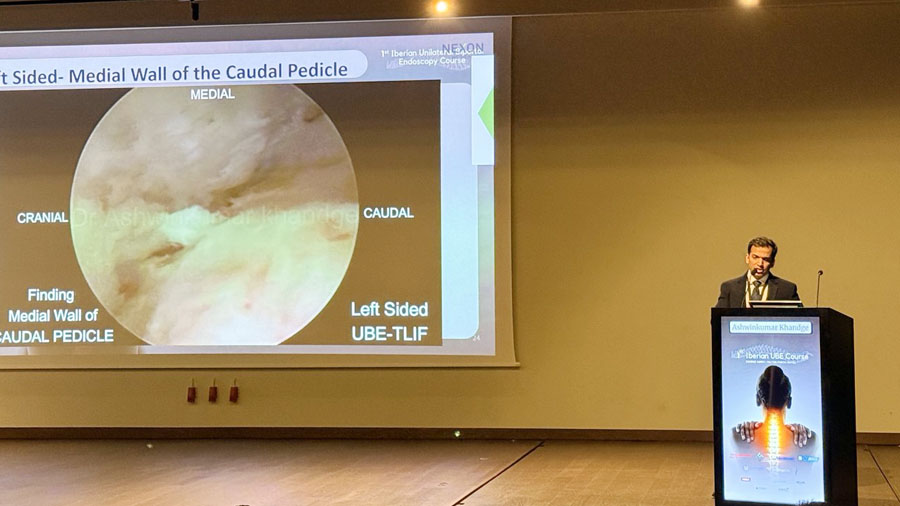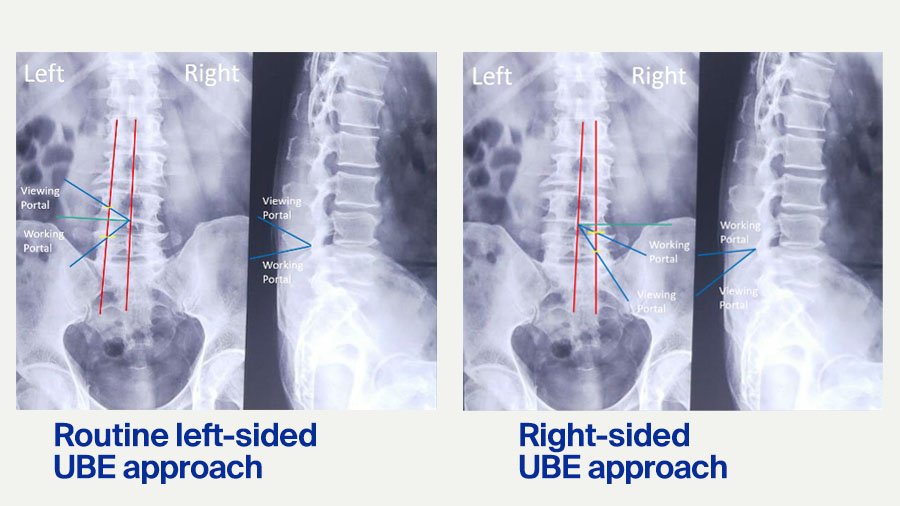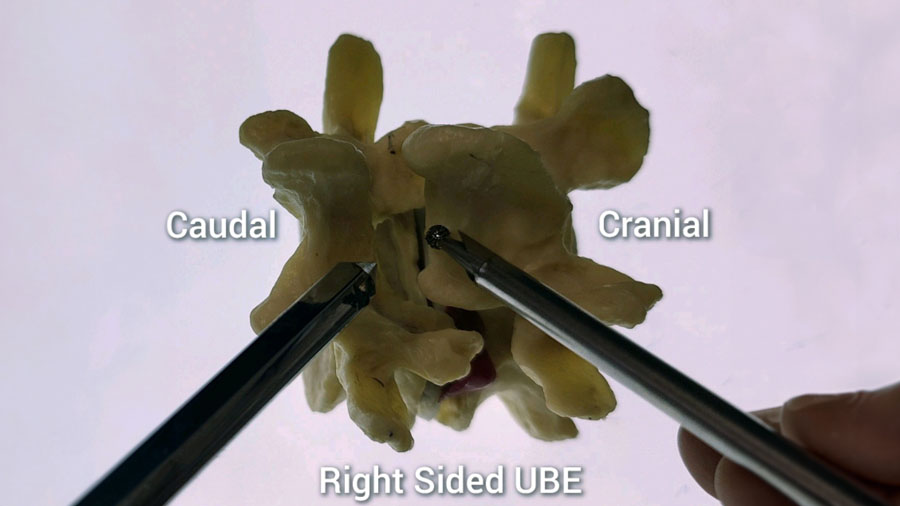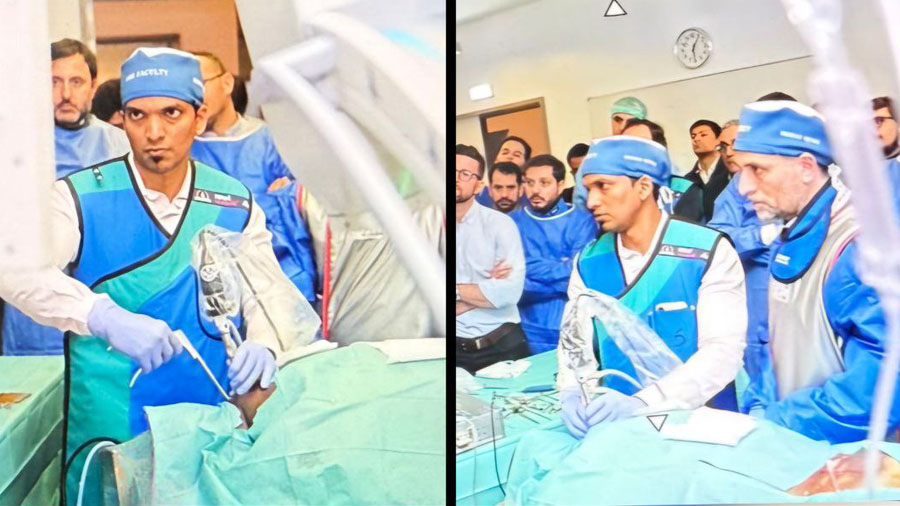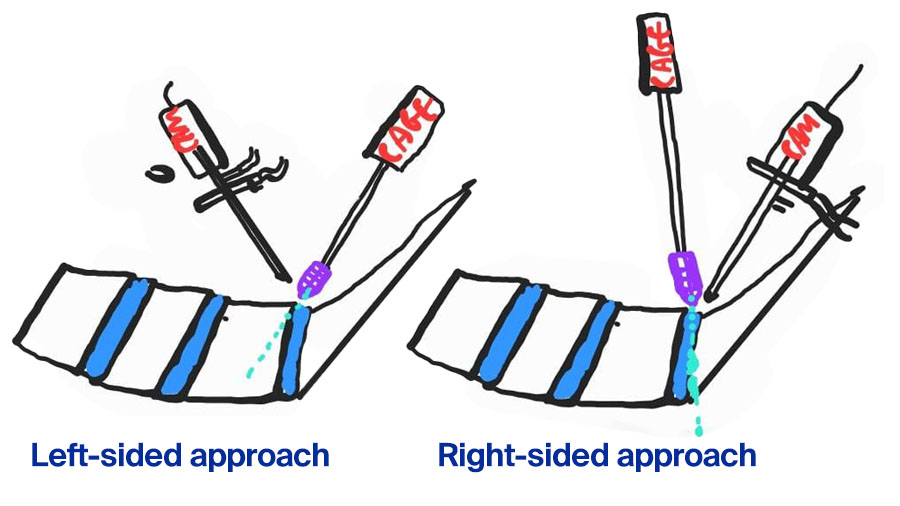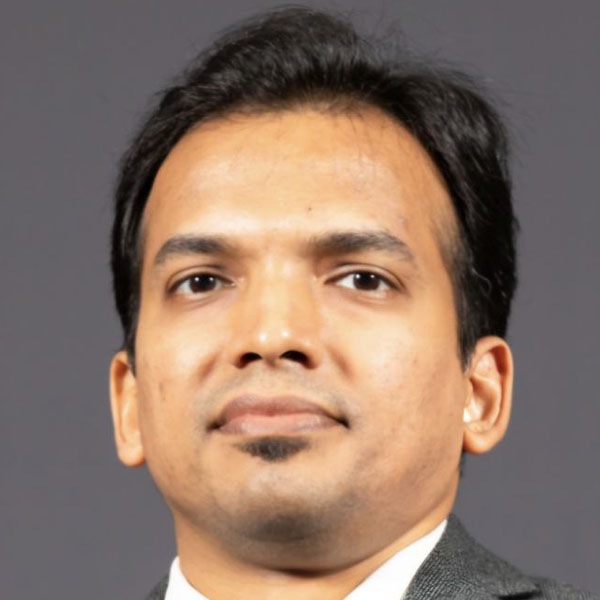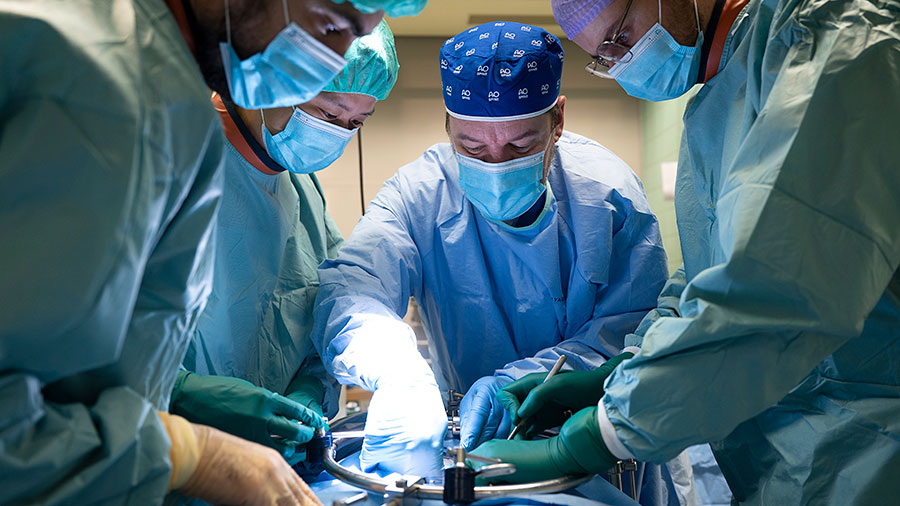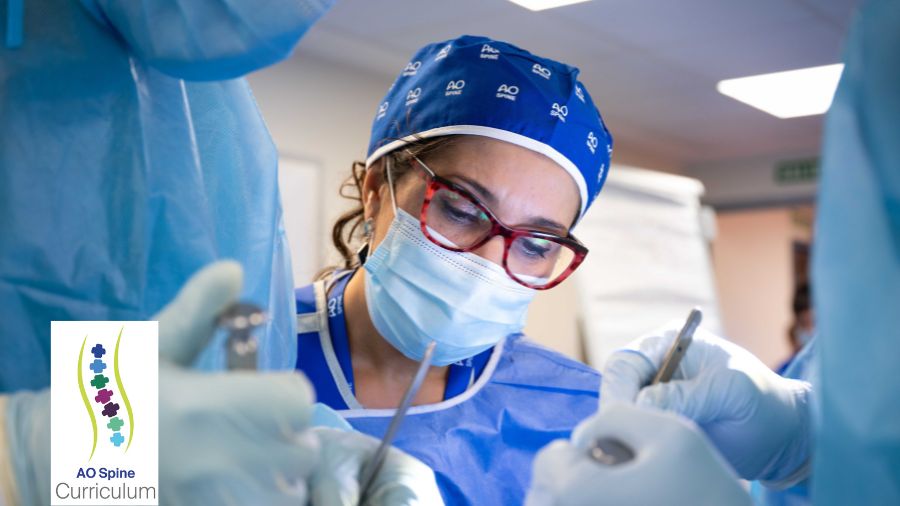Unilateral Biportal Endoscopy (UBE): Right-sided approach for right-handed surgeons
BY DR ASHWINKUMAR VASANT KHANDGE
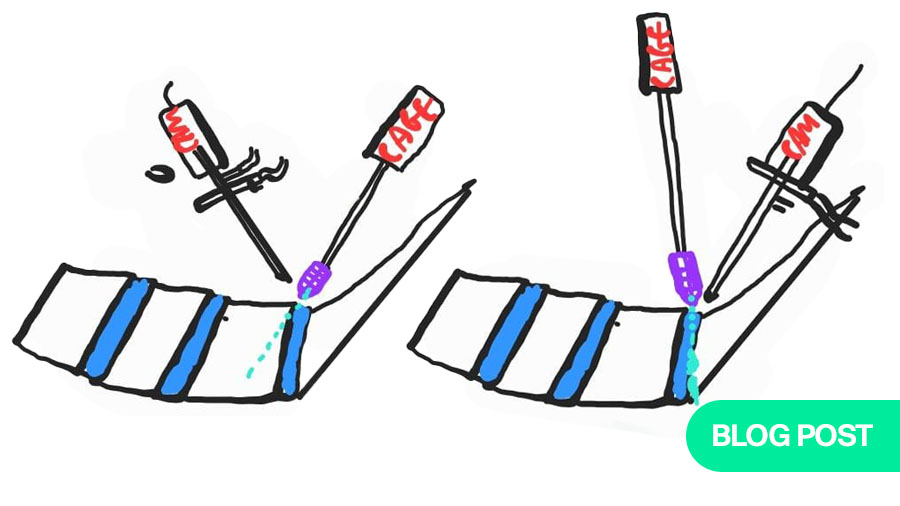
“Sir, why are you standing on this side?”
My fellow once asked me this during a right-sided surgery. I smiled, because this was precisely the nuance we miss when we teach Unilateral Biportal Endoscopy (UBE): the right-sided approach, to a right-sided pathology, by a right-handed surgeon. He told me that he had previously attempted UBE for the right-sided pathology standing on the left side (routine approach) and tried to go over-the-top to the right sided pathology.
He said, “I just couldn’t navigate and overcome the meshwork of the meningo-vertebral ligaments, epidural fat the inner point (akin to contralateral spino-laminar junction), and I had to convert the surgery to a microscope assisted open decompression.” This triggered my own thinking and how I faced similar challenges while starting UBE in my practice. In my teaching experience both nationally and internationally I realized that tackling the right-sided pathology is a major pain point faced by all the beginners of UBE.
Hence, I decided to write this article to help unravel the mysteries of the right-sided approach for the right-sided pathology by a right-handed surgeon standing on the right-side of the patient. Let’s unpack what that actually means.
This article is in conjunction with our previously published article on Unilateral Biportal Endoscopy (UBE): why spine surgeons should make the leap and master the skills in the AO Spine Guest Blog collection.
-
Read the quick summary:
- A left-side approach is considered the default in UBE, but some pathologies are optimally approached from the right-side.
- Dr Ashwinkumar Vasant Khandge provides tips and shares his experience for the adoption of the right-sided UBE.
- Right-sided UBE can be more straightforward and less tiring. The key to success involves the correct orientation of the Working Portal and Viewing Portal.
Disclaimer: The article represents the opinion of individual authors exclusively and not necessarily the opinion of AO or its clinical specialties.
The conventional assumption: left-side is the default
Most UBE surgeons begin their journey operating from the left side. It’s easier for a right-handed surgeon to triangulate, the saline flows well, and the view is relatively familiar as with open or microscopic tubular surgeries. The trajectory achieved by the right hand through the caudally placed working portal in this default approach with the Kerrison punch helps in cranial laminectomy and other steps.
But in the real world, pathology doesn’t respect default positions and are equally distributed on either the right or the left side. Right-sided disc herniations, lateral recess stenosis, foraminal decompressions—they demand just as much expertise and finesse.
That’s where the true artistry of UBE shows up.
1. Stand on the left side
Portals RIGHT—mirror image of the left side
Problem: Spinous process pushes the scope and instruments towards the facet joints
2. Stand on the left side
Portals LEFT-side but work on the contra lateral side (right side)
Contralateral Sublaminar approach—Reserved for Experts
3. Stand on the right side
Portals RIGHT—mirror image of the left side
Use the right hand cranially to hold the scope and train the left hand to do the surgical maneuvers
Standing on the right: the psychological hurdle
For a right-handed surgeon, standing on the right side of the patient initially feels like writing with your non-dominant hand. It’s not that the skills are missing—it’s the mental model that needs remapping.
The truth is: once you master the orientation, the ergonomics actually favor you specially to perform the caudal laminectomy and decompressing the lateral recess and the J-point (Junction of the medial part of superior articular process and the caudal lamina).
Let’s talk portals: the key to success
Here’s the golden formula:
Working Portal: Created just cranial to the pathology — usually a mirror image or slightly cranial compared to the left-sided approach.
Viewing Portal (Arthroscope): Always from the caudal end, about 2.5 to 3 cm below the working portal.
This setup gives you excellent triangulation, natural scope navigation, and enough room for saline egress—provided you maintain clean tissue planes.
Why right-sided UBE is a superpower
1. You operate what you see: No need to mentally flip anatomy.
2. Perfect for foraminal + extraforaminal lesions on the right and to perform UBE guided transforaminal lumbar interbody fusion (TLIF) in right sided pathologies or in patients with a high lordotic angle
3. Surgeon comfort increases with time, as caudal laminectomy is easier and straight-forward
4. Decompressing the right sided lateral recess, Intra-discal discectomy in contained herniations, right sided revision disc herniations and cage insertion becomes easier for the surgeon
My learning curve: a personal note
I remember struggling with my first few right-sided decompressions. Instruments felt odd, my scope-hand coordination was off, and I kept questioning: “Why not just operate from the opposite side or just convert this to Open or microscopic surgery?”
But then came the breakthrough: the right approach for the right pathology on the right side—literally and surgically—is often the shortest, safest, and most elegant route.
And once I owned that side, it opened up a new dimension to my UBE expertise.
Tips for surgeons starting on the right-sided UBE
1. Visualize in reverse: Use anatomy apps or mirrored videos.
2. Mark your portals clearly—don’t guess. Pre-operatively plan on the X-rays and compare to the MRI.
3. Do cadaveric practice or at least dry runs with your assistant. When attending cadaveric courses always ask and learn the right-sided approaches.
Closing thoughts: don’t avoid the right—master it
As UBE grows globally, our skillset must evolve beyond default techniques. Right-sided pathology deserves right-sided mastery. If you’re a right-handed surgeon, standing on the right side isn’t a compromise—it’s a strategic advantage.
The future of spine surgery doesn’t lie in one approach. It lies in your ability to adapt, decode, and operate—confidently—from either side.
About the author:
Dr Ashwinkumar Vasant Khandge, MS, DNB, MNAMS, F. ASSI, F. EMISS (Seoul, S.Korea) is a distinguished Chief Consultant Endoscopic Spine Surgeon and Clinical Professor in Orthopedics and Spine Surgery at Dr. D. Y. Patil Medical College and Research Centre and Sudarshan OrthoVision Hospital, Pune, India.
He is a globally recognized thought leader in Unilateral Biportal Endoscopy (UBE) and has been invited as international faculty to prestigious platforms worldwide. Dr Khandge's recent engagements include the First UBE Masterclass in Montpellier, France, the Iberian UBE Course in Porto, Portugal, both organized by the European Society of Unilateral Biportal Endoscopy (ESUBE) and the Singapore Spine Society Meet, the AO Spine Masterclass in Singapore, and the Nexon Biportal Meet in Madrid, Spain, where he shared insights into endoscopic spine surgery and mentored surgeons from across the globe.
Dr Khandge contributes actively to the AO Spine MISS Taskforce, serving on the Supporting Surgeon Board, and has played a pivotal role in shaping the AO Spine UBE curriculum. In addition, he collaborates with Nexon Medical International (Switzerland), Simulatory (Switzerland), and World IONM (Australia) designing an advanced educational model for UBE techniques aimed at transforming global training in endoscopic spine surgery. With a commitment to education, innovation, and patient care, Dr Ashwinkumar Vasant Khandge continues to contribute to the global advancement of endoscopic spine surgery, particularly UBE.
You might also be interested in...
AO Surgery Reference
The AO Spine MISS Taskforce has develped a number of AO Surgery Reference degenerative spine disease modules.
MISS courses
Minimally invasive spine operations through tubular/microscopic, endoscopic, and instrumented procedures.
AO Spine courses
Where will you go next? Explore all the upcoming spine courses and events in your region and worldwide.
AO Spine fellowships
Providing additional experience in surgical techniques for fully trained orthopedic and neurosurgeons interested in spine surgery.


